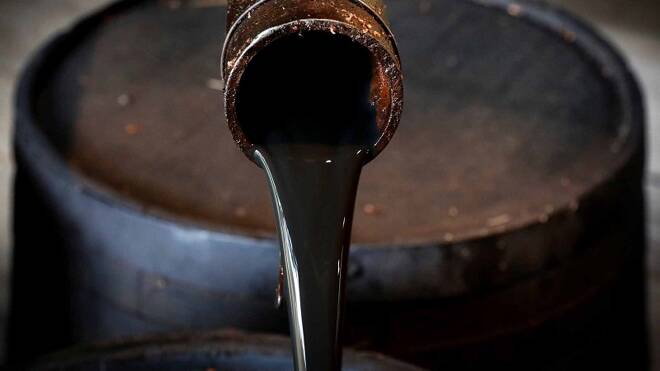Advertisement
Advertisement
Oil Price Fundamental Weekly Forecast – Focus Will Be On PMI Report, Inventories, Trade Talks
By:
Hurricane Dorian is expected to miss most of Florida, but could inflict serious damage on Georgia, South Carolina and North Carolina. It’s not likely to be a bullish event because there aren’t any oil platforms in danger. However, it may actually turn into a bearish event because of lower gasoline demand.
U.S. West Texas Intermediate and international-benchmark Brent crude oil futures finished slightly higher last week after a late Friday break wiped out most of its earlier in the week gains.
Prices were under pressure at the start of the week on follow-through selling related to the escalation of trade tensions between the United States and China from August 23. By the end of the week, a cooling off between the two economic powerhouses was one of the factors underpinning prices.
The market was also supported by two huge weekly inventory drawdowns as reported by the American Petroleum Institute (API) on Tuesday and the U.S. Energy Information Administration (EIA) on Wednesday. Both events served as proof that the OPEC-led production cuts are working to trim U.S. support despite record output.
Last week, October WTI crude oil settled at $55.10, up $0.93 or +1.72% and December Brent crude oil finished at $58.46, up $0.30 or +0.51%.
Trade Talks Resume
The United States and China verified on Thursday that they will resume trade talks on September 5. The news provided some relief to traders worried about a plunge in future demand growth.
U.S. Energy Information Weekly Storage Report
Crude oil prices spiked higher on August 28 after the EIA reported a surprisingly strong inventory drawdown. The news actually confirmed a similar number in the American Petroleum Institute’s (API) weekly inventories report late Tuesday afternoon.
According to the EIA, crude oil inventory fell 10 million barrels during the week-ending August 23. Analysts were looking for a 2.1 million barrel draw.
U.S. gasoline stocks fell by 2.1 million barrels versus a forecast of a 388,000-barrel drop. Distillate inventories fell by 2.5 million barrels for the week, while inventories at Cushing fell by 2.4 million barrels.
Simmering Middle East Tensions
Early last week, crude oil prices fell after French President Emmanuel Macron pushed for a meeting between the U.S. President Trump and Iranian President Hassan Rouhani at the G7 Summit in France.
However, renewed hopes for talks between Trump and Rouhani were dealt a blow on August 27 when Rouhani said there would be no meeting until economic sanctions imposed on Tehran are removed.
“No positive developments will happen in Iran-US ties without them lifting sanctions and abandoning their hostile actions,” Rouhani said in a televised speech – a day after Trump said there was a “really good chance” the men could meet in the coming weeks.
“We will change our behavior towards those who imposed sanctions on the Islamic Republic of Iran and committed economic terrorism, if they show remorse,” Rouhani added.
Continued tensions between the United States and Iran are viewed as supportive for crude oil prices.
Weekly Forecast
Hurricane Dorian is expected to miss most of Florida, but could inflict serious damage on Georgia, South Carolina and North Carolina. It’s not likely to be a bullish event because there aren’t any oil platforms in danger. However, it may actually turn into a bearish event because of lower gasoline demand.
Traders are going to be watching for daily updates from the U.S.-China trade talks, hoping they yield enough fruit to dampen concerns over a slowing global economy and its effect on demand growth.
The September 3 U.S. ISM Manufacturing PMI report is also likely to be a market moving event. Traders are looking for a reading of 51.2, unchanged from the previous month.
Tuesday’s API and Wednesday’s EIA Weekly Inventories report are also expected to move the markets.
About the Author
James Hyerczykauthor
James Hyerczyk is a U.S. based seasoned technical analyst and educator with over 40 years of experience in market analysis and trading, specializing in chart patterns and price movement. He is the author of two books on technical analysis and has a background in both futures and stock markets.
Did you find this article useful?
Latest news and analysis
Advertisement
